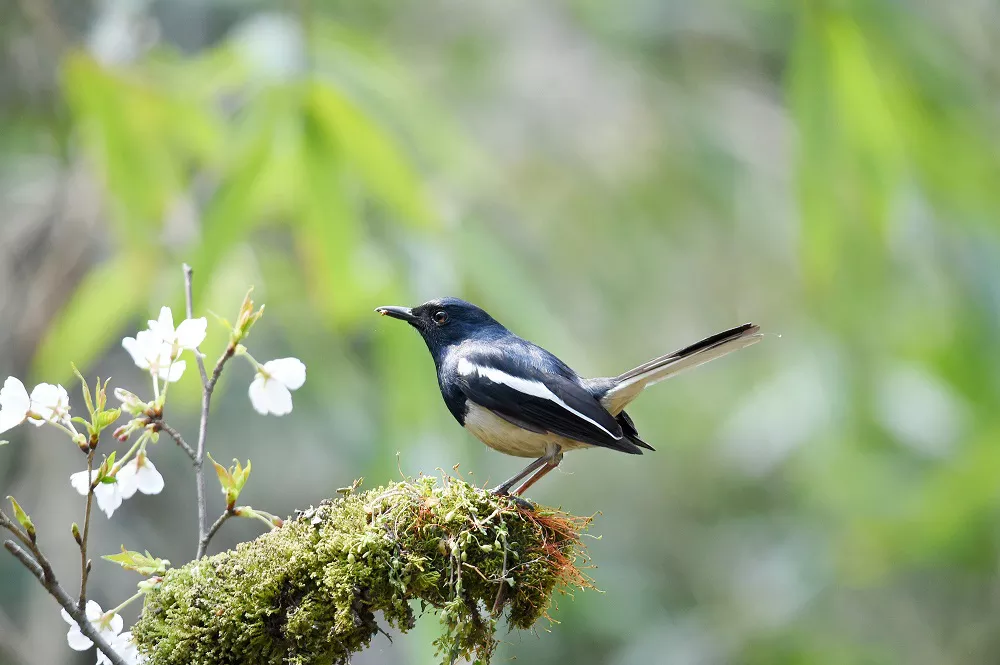The Oriental Magpie-Robin (Copsychus saularis), also known as the Oriental Robin, is a small passerine bird found in parts of Asia, including India, Southeast Asia, and southern China. It is a popular bird among birdwatchers, owing to its striking black-and-white plumage, melodious song, and bold behavior. In this article, we will discuss the diet of the Oriental Magpie-Robin.
The Oriental Magpie-Robin is an omnivore, which means it eats both plants and animals. Its diet is varied and includes insects, fruits, seeds, and small vertebrates such as lizards and geckos. Insects form a significant part of its diet and include beetles, grasshoppers, crickets, caterpillars, and ants. It is an agile hunter and can catch insects on the wing, as well as hunt on the ground by hopping and running.
Fruits and seeds are also an essential part of the Oriental Magpie-Robin’s diet. It feeds on a variety of fruits, including figs, berries, and mulberries. It also eats seeds of plants such as grasses and sedges. The bird is known to pluck fruits and berries from trees and bushes, and sometimes even scavenges on fallen fruits.
Apart from insects, fruits, and seeds, the Oriental Magpie-Robin also feeds on small vertebrates such as lizards and geckos. It is known to hunt these creatures on the ground, using its sharp beak and claws to catch them. It is also known to raid the nests of other birds, stealing eggs and young birds.
In urban areas, the Oriental Magpie-Robin has adapted to feeding on human-made food, including bread crumbs, rice, and other leftover food. However, it is important to note that such food should not form a significant part of its diet, as it can lead to nutritional deficiencies and health problems.
In conclusion, the Oriental Magpie-Robin is an omnivorous bird that feeds on a varied diet of insects, fruits, seeds, and small vertebrates. Its diet is an important factor in its survival and reproduction, and its adaptability to human-made food has enabled it to thrive in urban environments. However, it is essential to ensure that its diet remains balanced and that it does not become dependent on human-made food.


 Facebook
Facebook  Instagram
Instagram  Youtube
Youtube 